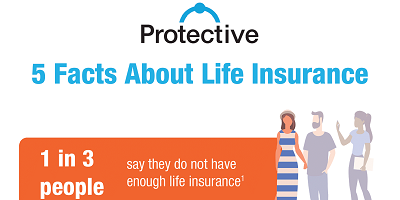Understanding fast, no exam policies - pros and cons
Buying a life insurance policy can be a long process. From the time you meet with your agent, apply, go through underwriting, and receive the policy, several weeks may have ticked by. Fortunately, there are ways to shorten that process.
Many life insurance policies require full medical underwriting to determine the appropriate risk classification. The applicant completes various medical exams or tests which is followed by an underwriting review of the results. The overall process can be lengthy, which many people cite as the primary reasons they avoid buying life insurance. This article discusses a few different types of life insurance policies, some of which Protective does not offer.
However, it doesn't have to be that way. Today, many companies offer some no exam life insurance products that do not require medical underwriting. With these products, you typically answer questions about specific conditions and illnesses on the application, but exams, blood work, and other medical tests are not required, reducing the anxiety of waiting for approval.
Both guaranteed issue and simplified issue products could be considered examples of fast, no exam life insurance. Guaranteed issue means that you cannot be declined for coverage if the answers to the health questions are within the company's guidelines. Simplified issue policies may require some additional follow-up from the company during the approval or underwriting process. Guaranteed issue and simplified issue products do not require medical exams or tests.
Here are three no-exam life insurance characteristics that you should be aware of:
- Both term and permanent life insurance are available. The basic function is to pay a death benefit to the life insurance beneficiary when the insured dies. In this regard, fully underwritten life insurance and no-exam life insurance operate exactly the same. Some no exam life insurance products may have stipulations about the amount of the death benefit during the first two years of the policy, for example. Be sure to ask your agent when the full death benefit is effective.
- No exam life insurance products may limit the amount of coverage available. Each company has different rules about how much life insurance can be purchased using a non-medical application. Your agent will be able to recommend a company and product that are right for you.
- No exam life insurance will typically cost more than a similar policy that is fully underwritten. And that makes sense. After all, medical underwriting is how an insurance company determines the premium the applicant should pay for the life insurance policy. Without the same level of information about the health status of the applicant, a "fast" life insurance policy may be based on the health profile of the general population and therefore may require a higher premium.
Want to get life insurance fast, without any medical exams? Talk to an agent or company representative about a guaranteed issue or simplified issue life insurance policy. Remember, life insurance is an important part of financial planning. Don't let the thought of medical exams deter you from taking the important step of protecting your loved ones.
WEB.1455.05.15




